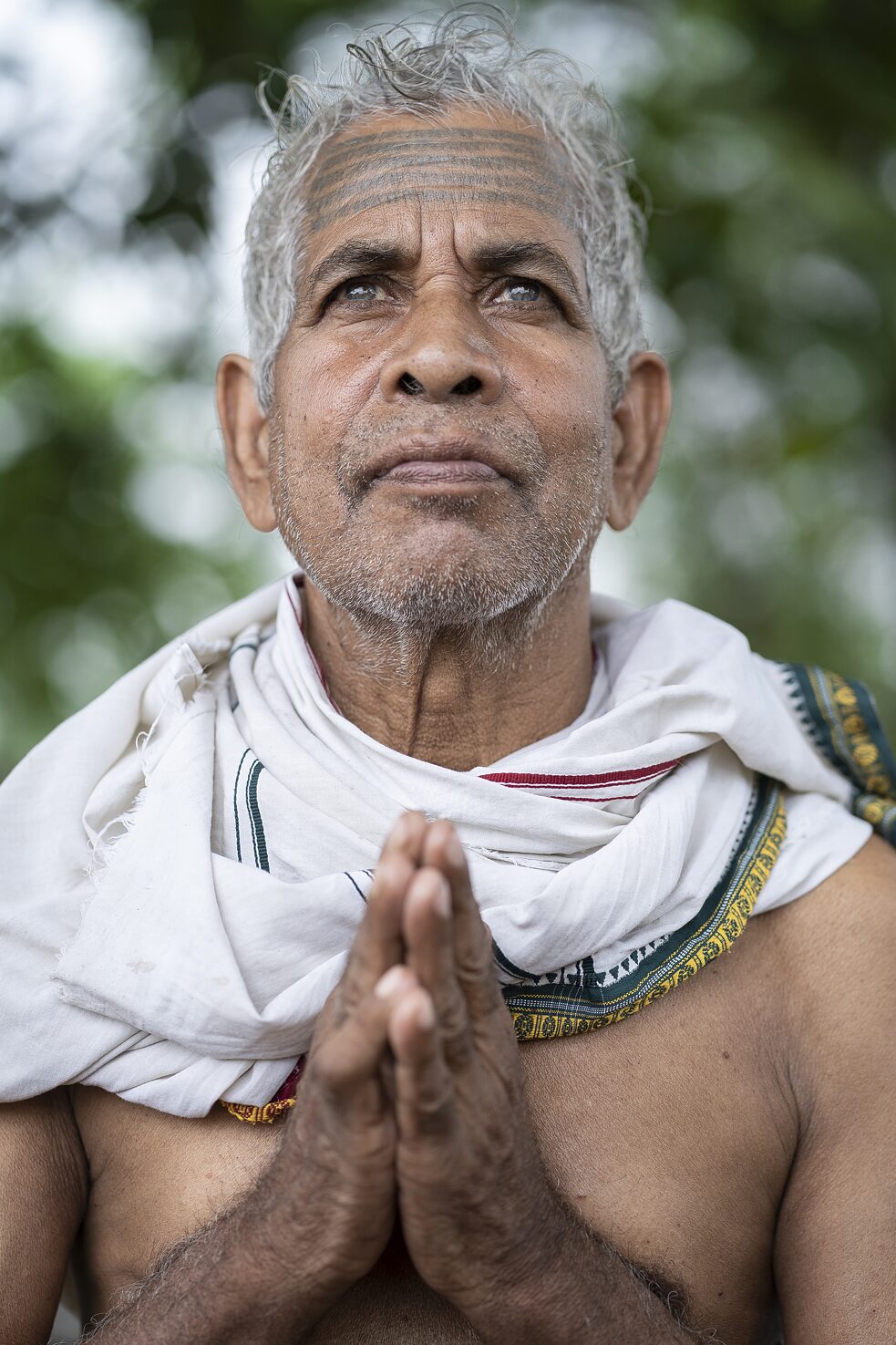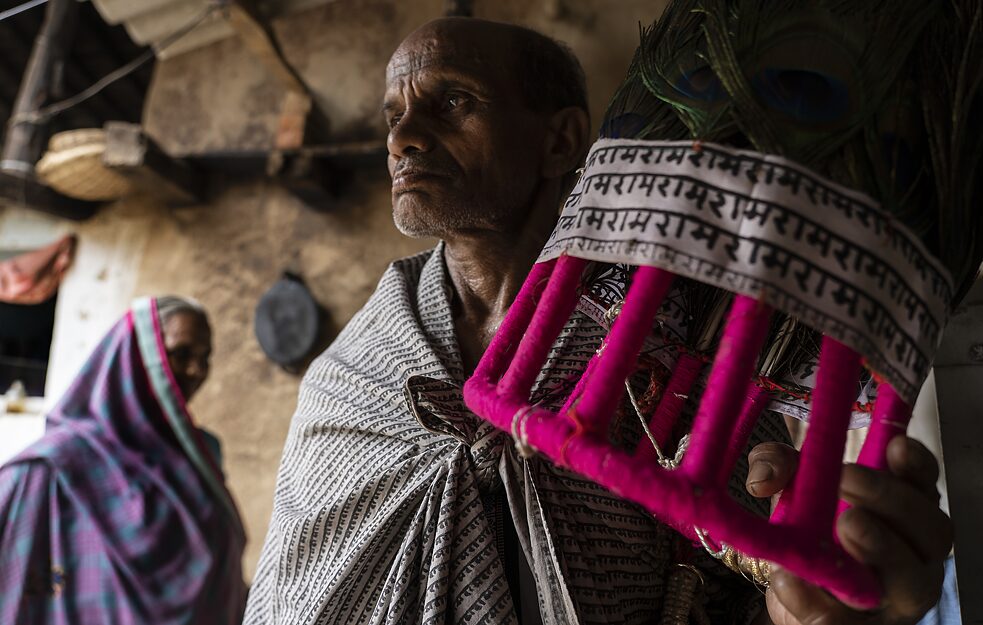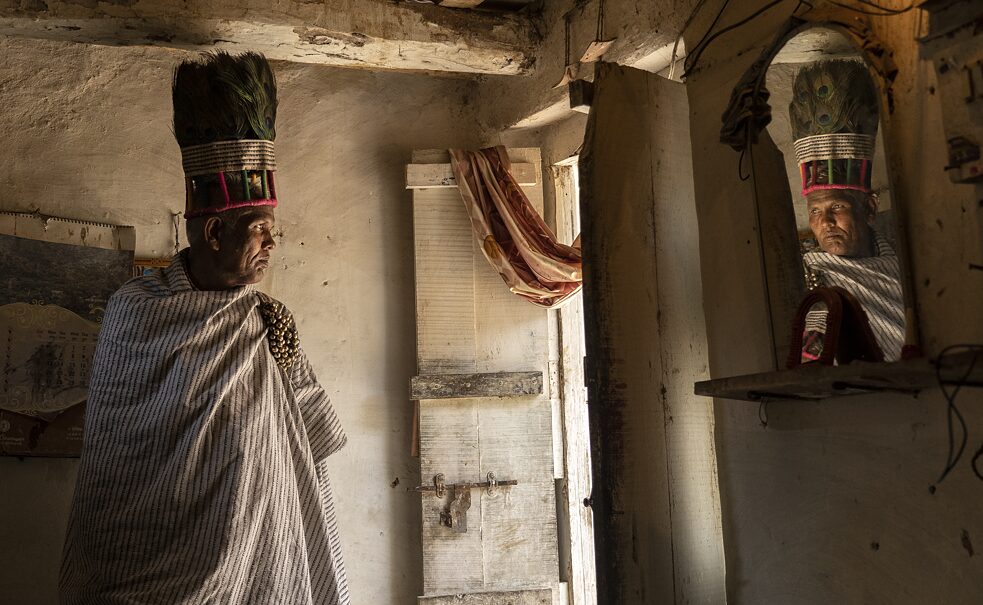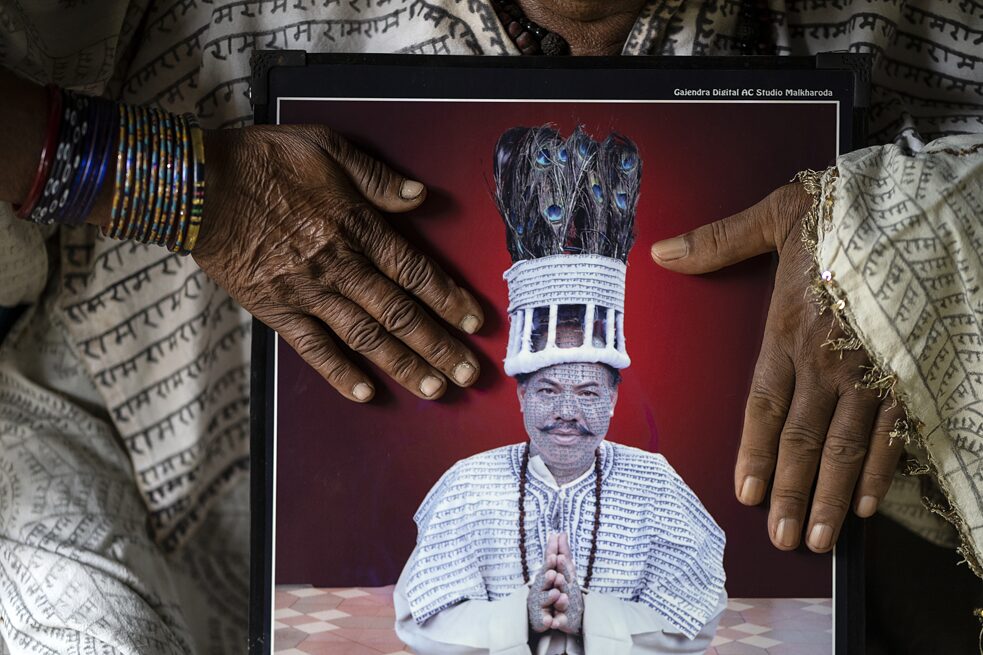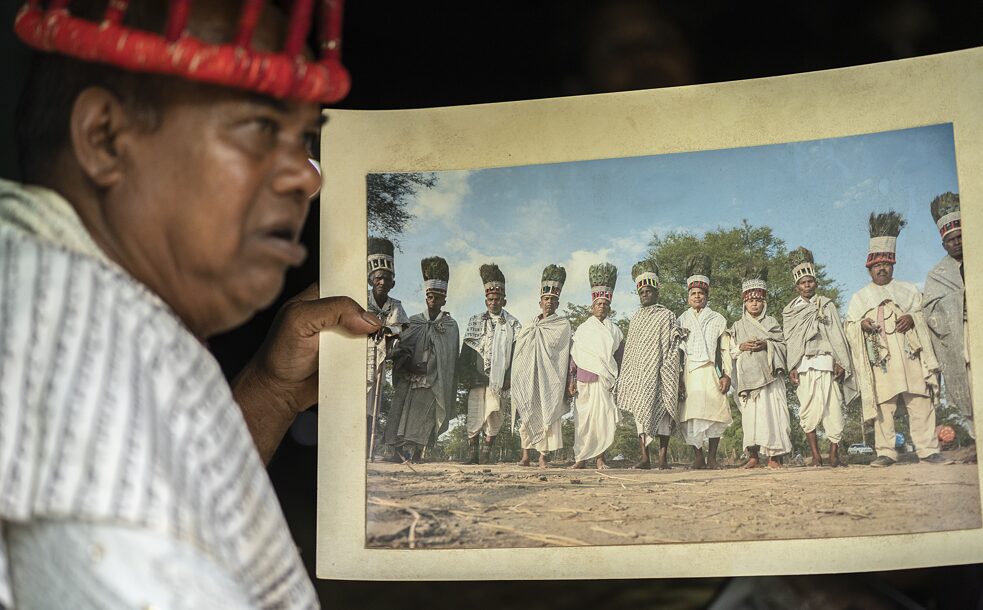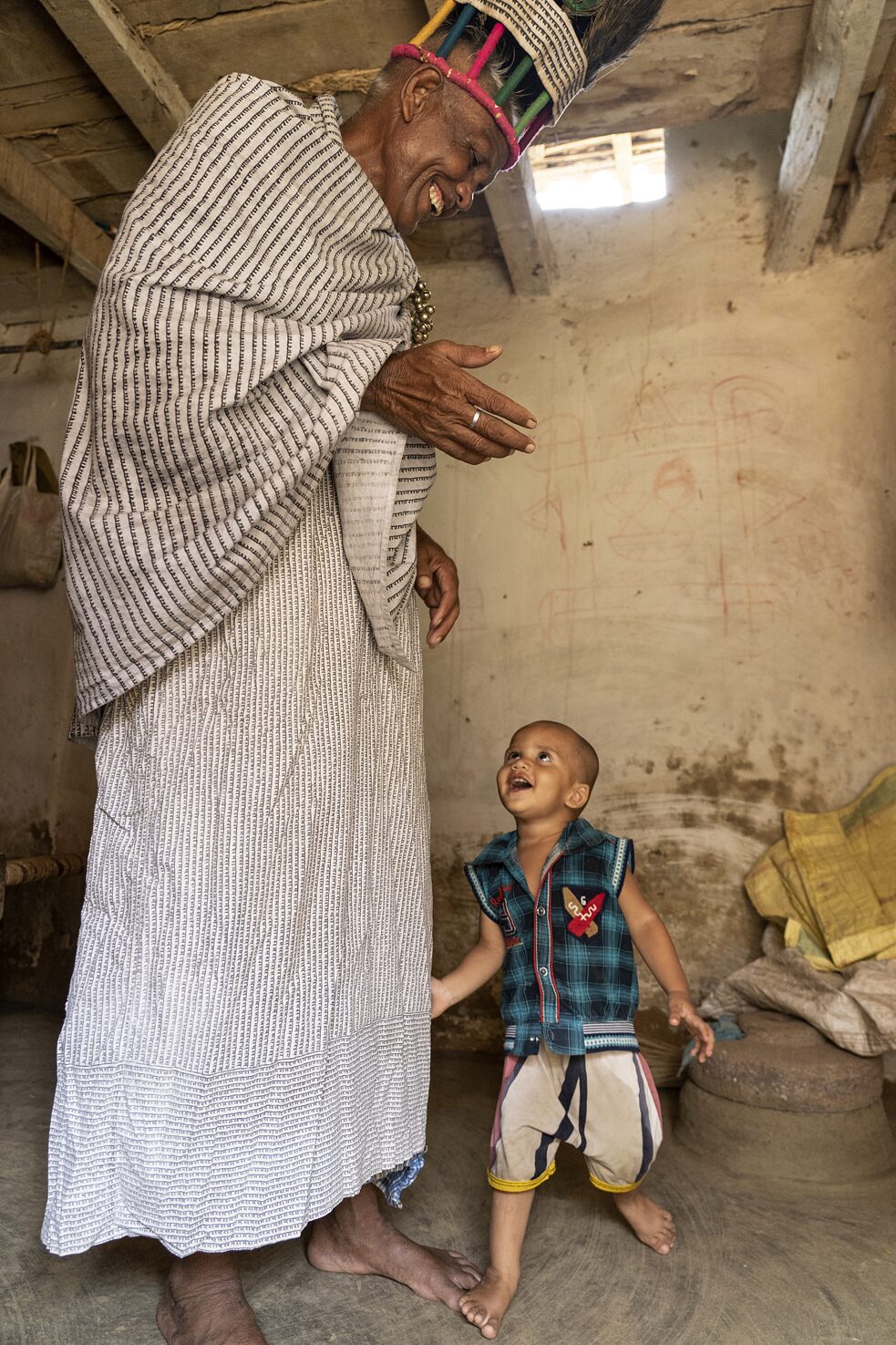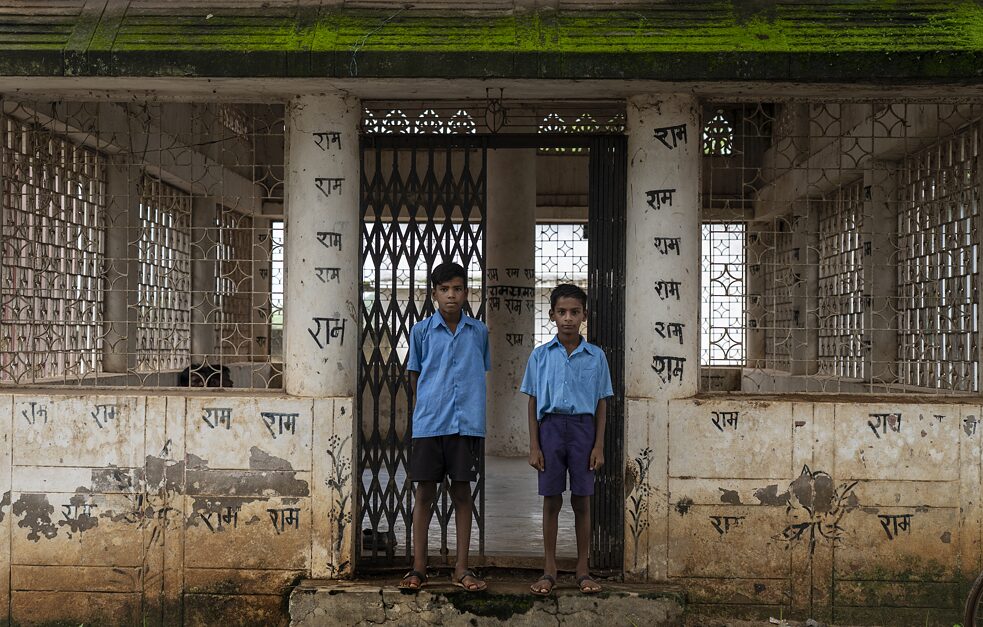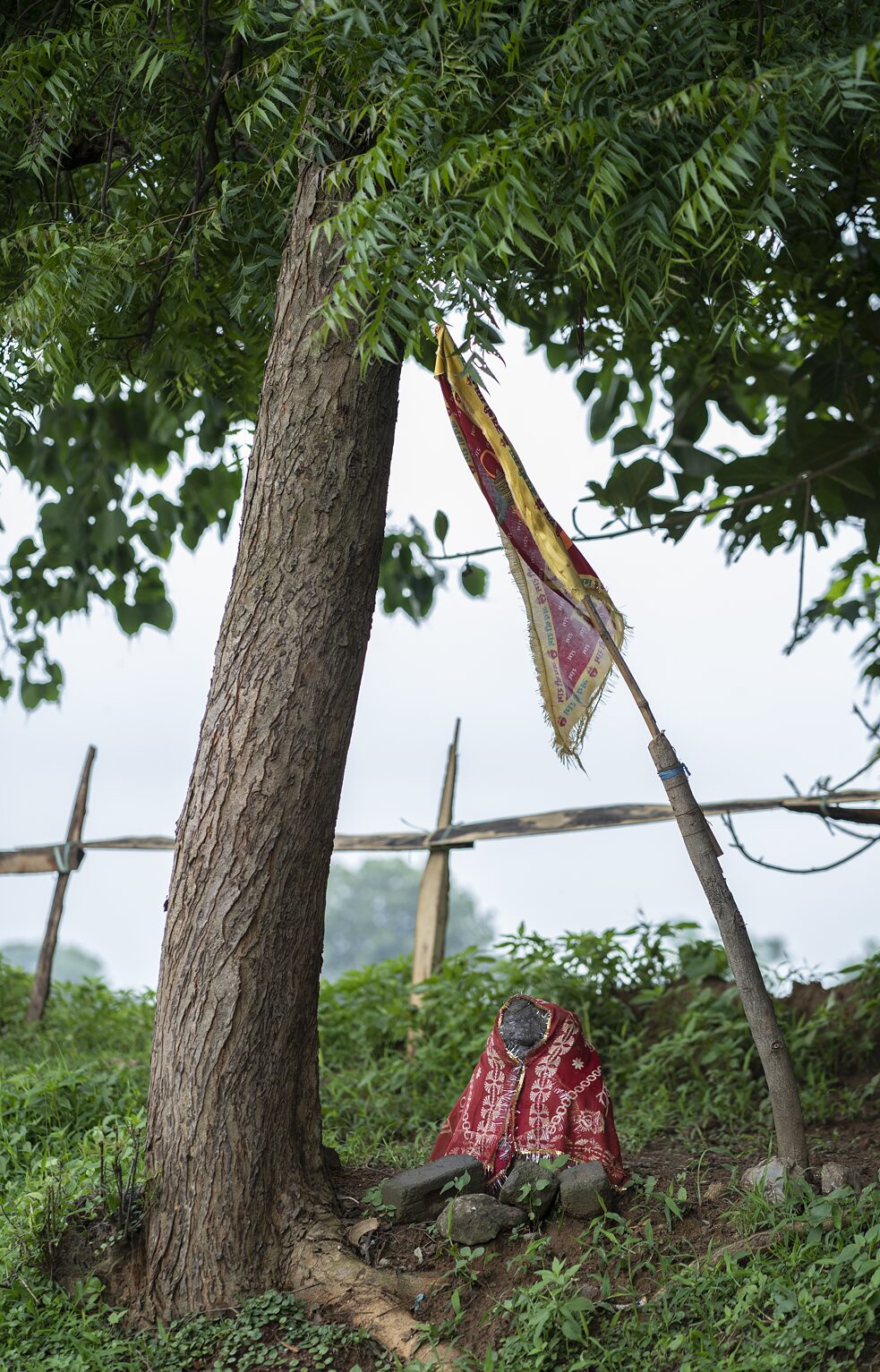Pubarun Basu | Photo Series
In the Name of God
The photo series portrays the journey to freedom for the Ramnamis, a lower caste tribe in India, and the permanent tattoos of "Ram" an act of defiance against the casteist regime.
About the series
The Ramnami sect has been burdened with a history of systematic oppression ever since the Mughal era. As members of the lower caste, the tribal people were denied entry into temples and treated as untouchables throughout centuries. Following a series of events that took away the freedom of practicing their religion, the tribe was pushed to the limits of socio-political hegemonic tyranny. The indigenous identity of this ethnic group was stripped off of them by the upper caste communities. The late 19th century witnessed the rise of a hero in the name of Parasuram, who emerged from the ashes of mutiny and started the Ramnami sect as an act of defiance against the casteist regime. The name of "Ram" was tattooed on the bare skin of all the members of the tribe, to prove a silent but powerful message that God is omnipresent.
Their white attires were also decorated with the name of Ram, while the peacock feathers on their headgear held a rich mythological significance. Although a stigma surrounding the lower caste tribes continues to loom upon the people, the journey to freedom for the Ramnamis has been resolved into a peaceful conclusion. As a result, the younger generation finds it unnecessary to follow the customs that were once institutionalized by their elders. The tattoos have started fading away with time, as have their significance. Yet, they remain etched on the skins as a permanent reminder of the struggle of independence of the Ramnamis.
The Ramnamis now live a humble life in the villages of Janjgir-Champa in Chhattisgarh, hidden from the modern gaze. While agriculture still remains as their primary mode of livelihood, the sons and daughters of the Ramnamis have ventured out into the cities in search of jobs in various sectors. The sect has broken up into individual communities that are scattered across the district. Yet, each year they come together to celebrate their history through a bhajan festival. The meeting halls that once saw the rebellion taking shape now house young students aspiring toward a better tomorrow. The name of Ram finds itself in every nook and corner of the villages. The Ramnamis, mostly in their 70s, are now but a fleeting glimpse in the mainland of India.
